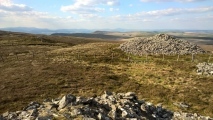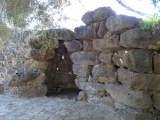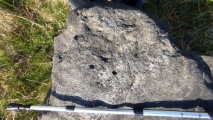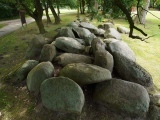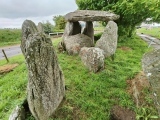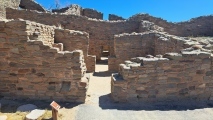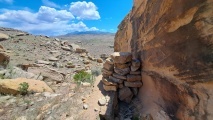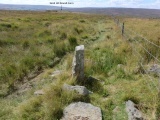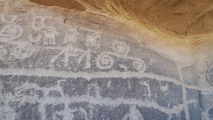Andy Burnham's Blog, page 25
May 15, 2025
Carn Biga 2
Although vandalised this is still a very impressive structure along with its sister cairn Carn Biga I (seen here to the right of this photo). These two cairns stand out very strongly in the surrounding area and can be seen on the skyline from the source of the Severn to the west and from Carn Fach Bugeilyn cairn to the NW.
Published on May 15, 2025 07:15
San Lorenzo Nuraghe (Bauladu)
Nuraghe San Lorenzo in Sardinia is located in the park next to the Romanesque church of the same name. The structure is partly incorporated into the wall surrounding the church. Part of the tholos chamber with originally at least two niches has survived.
Published on May 15, 2025 07:07
Clegg Moor
Some mysterious markings on millstone grit boulders discovered by John H Abrahams. See also here and here. Rock art or natural, what do you think?. Located at the bottom of Clegg Moor in Lancashire is a scattering of rocks, I found three stones with peck marks, there is no indication of quarrying. Similar markings can be found on other rock scatters on the top of Clegg Moor.
Published on May 15, 2025 02:42
May 14, 2025
Steinfeld Steingrab (Altmark)
Long Barrow with Chambered Tomb in Saxony-Anhalt. The original size of the long barrow was about 46.5 x 6.5 x 4.8m (A bit smaller on the south end). The barrow had about 60 kerbstones, 53 of them are still there. All of these kerbstones have fallen and are out of place, this mass of de-arranged stones give the tomb a bit of a weird look.
Published on May 14, 2025 12:01
May 13, 2025
Créac'h Gallic
The remains of a fairly large megalithic structure with a single capstone resting (just) on three support stones. #TombTuesday It looks like a fourth support has recently broken and fallen, it looks most precarious and that it could fall at any time. The main chamber is about 4 metres by 2 metres and 2 metres high.
Published on May 13, 2025 04:25
May 11, 2025
Aztec Ruins National Monument
The modern of village of Aztec, San Juan County, New Mexico, is the site of several closely spaced Ancestral Puebloan village “Great Houses” and smaller homesteads. Also ancient roads, temples and artifacts - the complex is considered to be a Chaco Canyon outlier. The park contains a visitor's center with museum and a multitude of archaeological sites, only a few of which are accessible to the public.
Published on May 11, 2025 06:17
White Moor Stone
150 metres southeast of White Moor Stone circle stands this stone, which is more than 5 feet in height, and has been adapted as a parish boundary stone, with its parish marks cut into it. #StandingStoneSunday This stone is almost certainly much older than just a boundary stone, and is likely to be associated in some way with the circle.
Published on May 11, 2025 01:51
May 10, 2025
Cannon Ball Mesa Pueblo Ruins
Cannon Ball Mesa is an extensive area that stretches along County Rd G west of Cortez CO to nearly the Utah border. There are ruins of small Ancestral Pueblo structures tucked in many places along this land form. The ruins are very small and typically facing south under very large boulders or overhangs. I was able to find 4 or 5 different sites but I'm sure there are more.
Published on May 10, 2025 03:12
May 9, 2025
Coldman Hargos
A well weathered, named boundary stone, named ‘The Folly’ on the 1856 OS map. At one time it marked the boundary between the Civil Parishes of Commondale to the west and Danby to the east and prior to that it marked the boundary of the Ancient Parishes of Guisborough to the west and Danby to the east.
Published on May 09, 2025 06:39
May 8, 2025
Ismay Rock Shelter Petroglyphs
A rock art site a 1/4 mile north of the defunct Ismay Trading Post and County Road G, near the Utah border. The site comprises a pueblo-like ruin under a large boulder. The petroglyphs are just above this ruin on the underside of a huge boulder. The rock art is a mix of modern graffiti and ancient glyphs.
Published on May 08, 2025 15:22

